


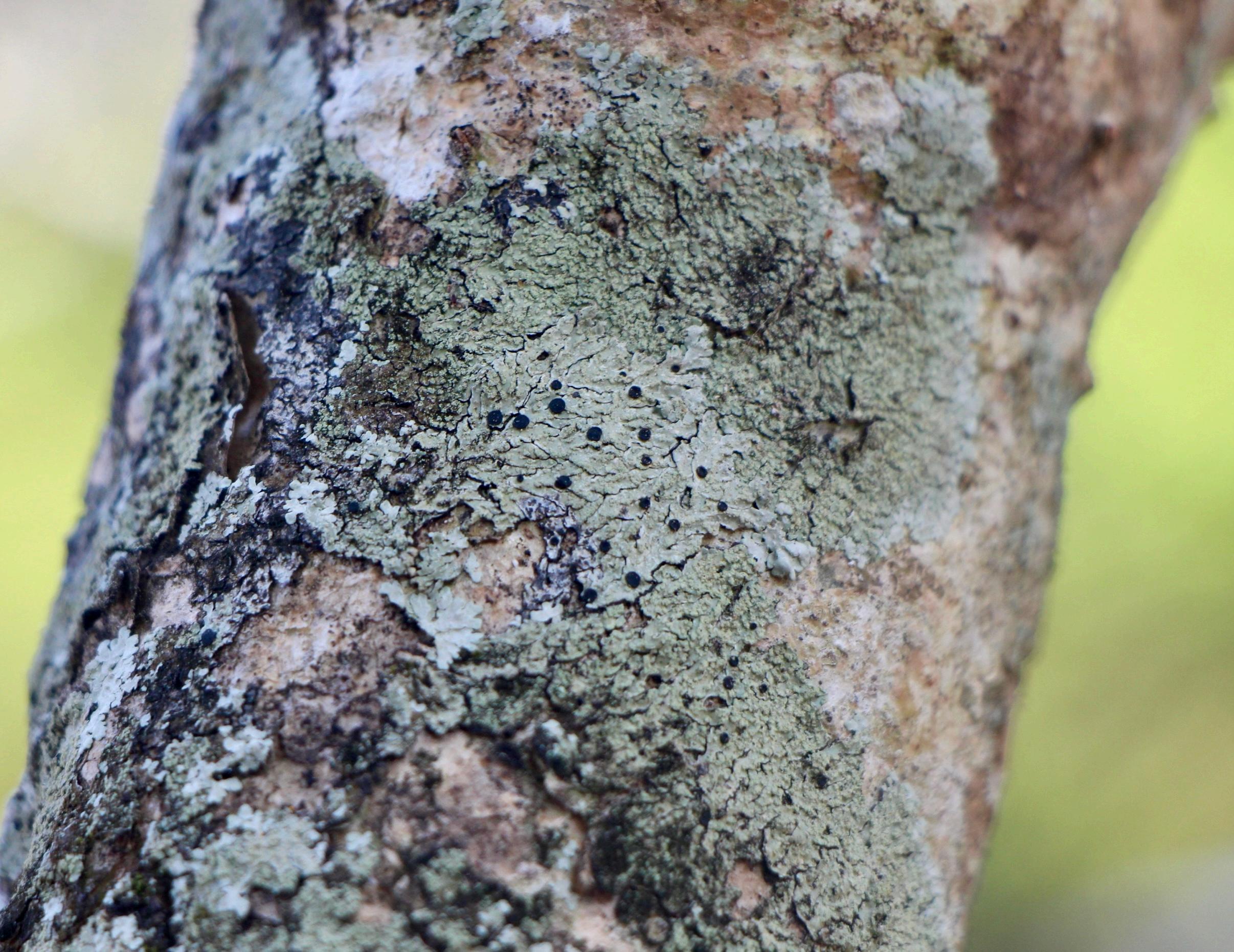
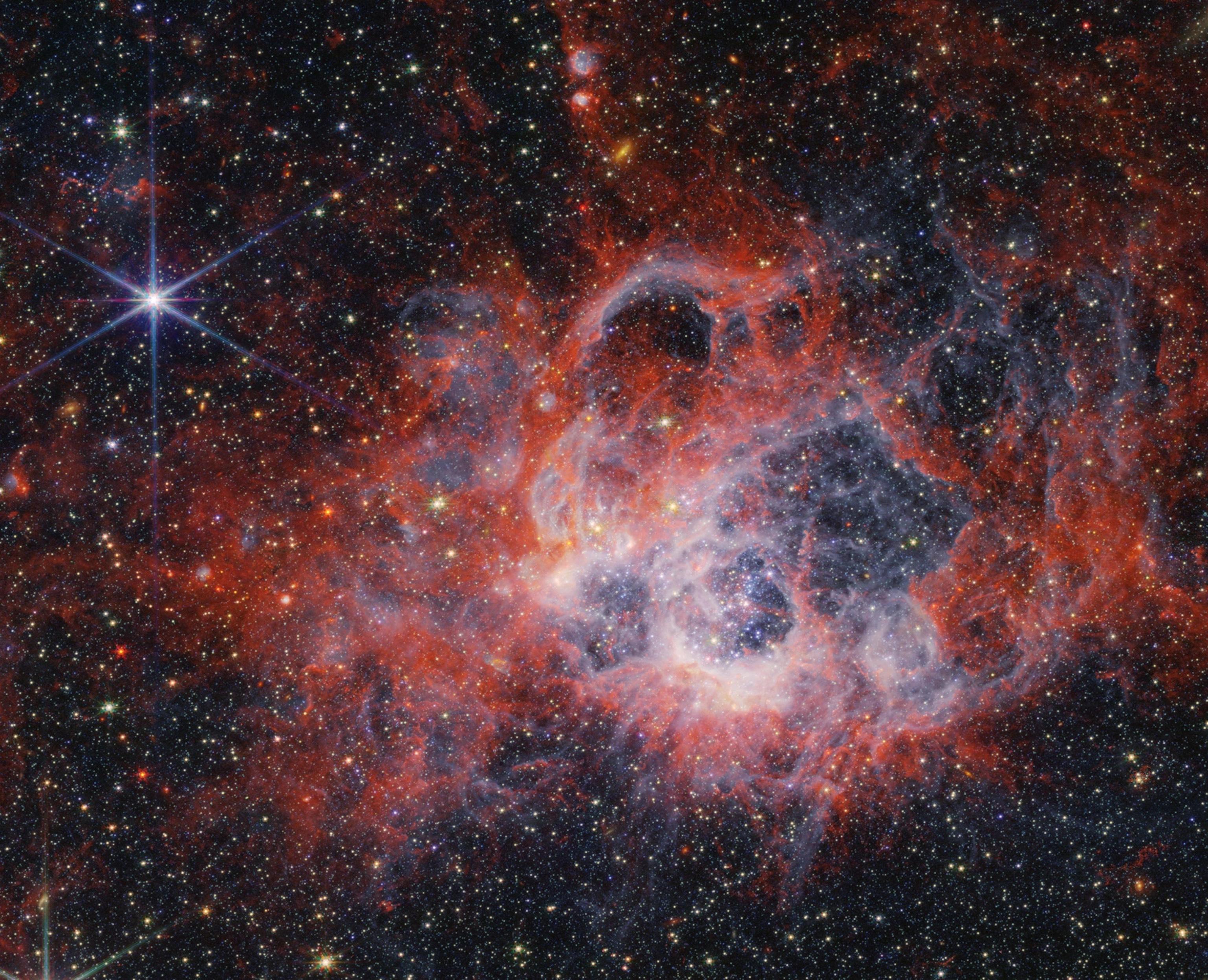
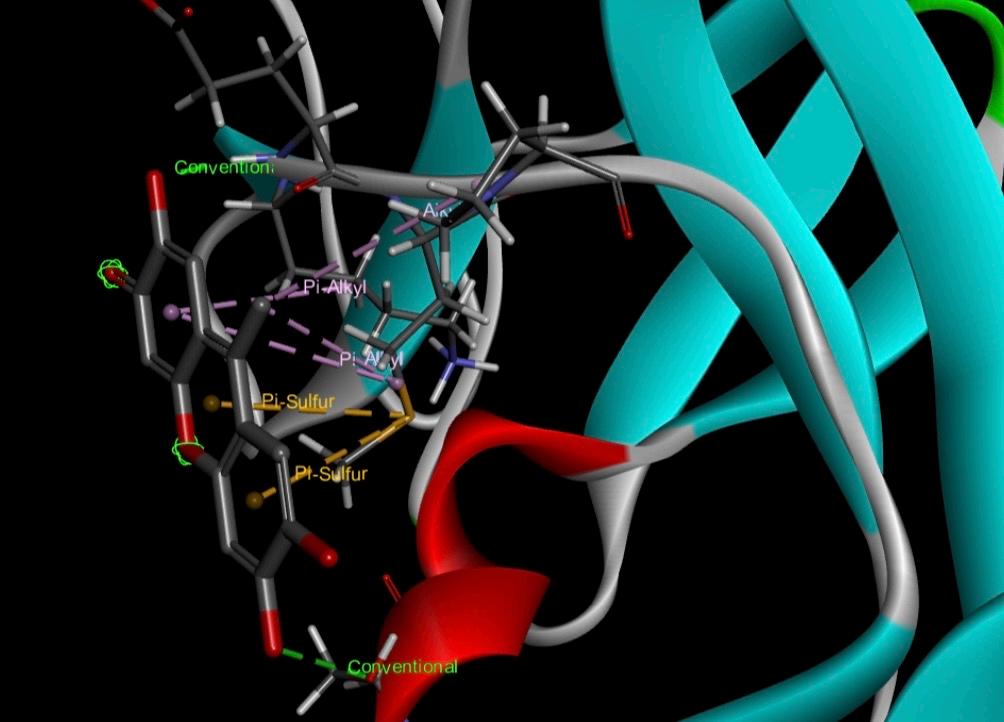










This academic year, The Outdoor Science Club members have worked on three interesting research projects: Thitichaya Cheewawisit and Naparpa Parpatson studied the "Distribution of Corticolous Lichens on Different Tree Species at Satree Phuket School," looking at the diversity of lichen species on different trees. Chaeyun Hong did a metaanalysis on extraterrestrial life and wrote an article titled "How Humanity Endlessly Searches for the Possibility of Not Being Alone." Andrea Warnnissorn researched "In Silico Investigation of Anticancer Drugs as Potential Inhibitors for Interleukin 1," focusing on treating lung cancer caused by PM2.5 inflammation.
This year’s newsletter shares these exciting topics and celebrates the hard work and findings of our club members.


Thitichaya Cheewawisit and Naparpa Parpatson
Lichens are unique organisms formed by a partnership between fungi and algae. They grow in various places worldwide, including on tree bark, where they are called corticolous lichens. This research aims to study the distribution of three corticolous lichens namely Pyxine cocoes (Sw.) Nyl, Marcelaria benguelensis (Mull.Arg.) Aptroot, Nelsen & Parnmen, and Graphis dendrogramma Nyl. on different tree species at Satree Phuket School.




Every year, scientists discover new species of lichens, with about 3,600 known species in North America alone. Lichens thrive in diverse environments and climates. They play a crucial role in ecosystems by breaking down rocks into soil, providing food for animals, and indicating environmental health by growing in polluted areas.
For the School Year 2024-2025, the Year 12 Outdoor Science Club members of Satree Phuket SchoolInternational Program Cambridge (IPC) decided to explore these fascinating organisms further. By studying lichens on different types of trees at our school, we aimed to understand where they grow best and why. This activity helped us learn about the life cycles of lichens and how they adapt to different conditions.
This research is signi fi cant because it provides information about the health of Satree Phuket School’s environment. Finding different known species of lichens could indicate a healthy environment at our school. By studying their distribution on various tree species and understanding their preference, the school community can help in biodiversity conservation efforts. The results of our work are presented in this newsletter. We hope they inspire students to continue studying lichens, conduct real scientific research, and learn more about nature and ecology in the future.







The corticolous lichens were observed on various tree species at Satree Phuket School. Their frequencies are detailed in Table 1, and their distribution around the campus is illustrated in Figure 1.
Table 1. Lichen species and their frequencies found on each tree bark

1. Map Showing the Distribution of Corticolous Lichens at Satree Phuket School




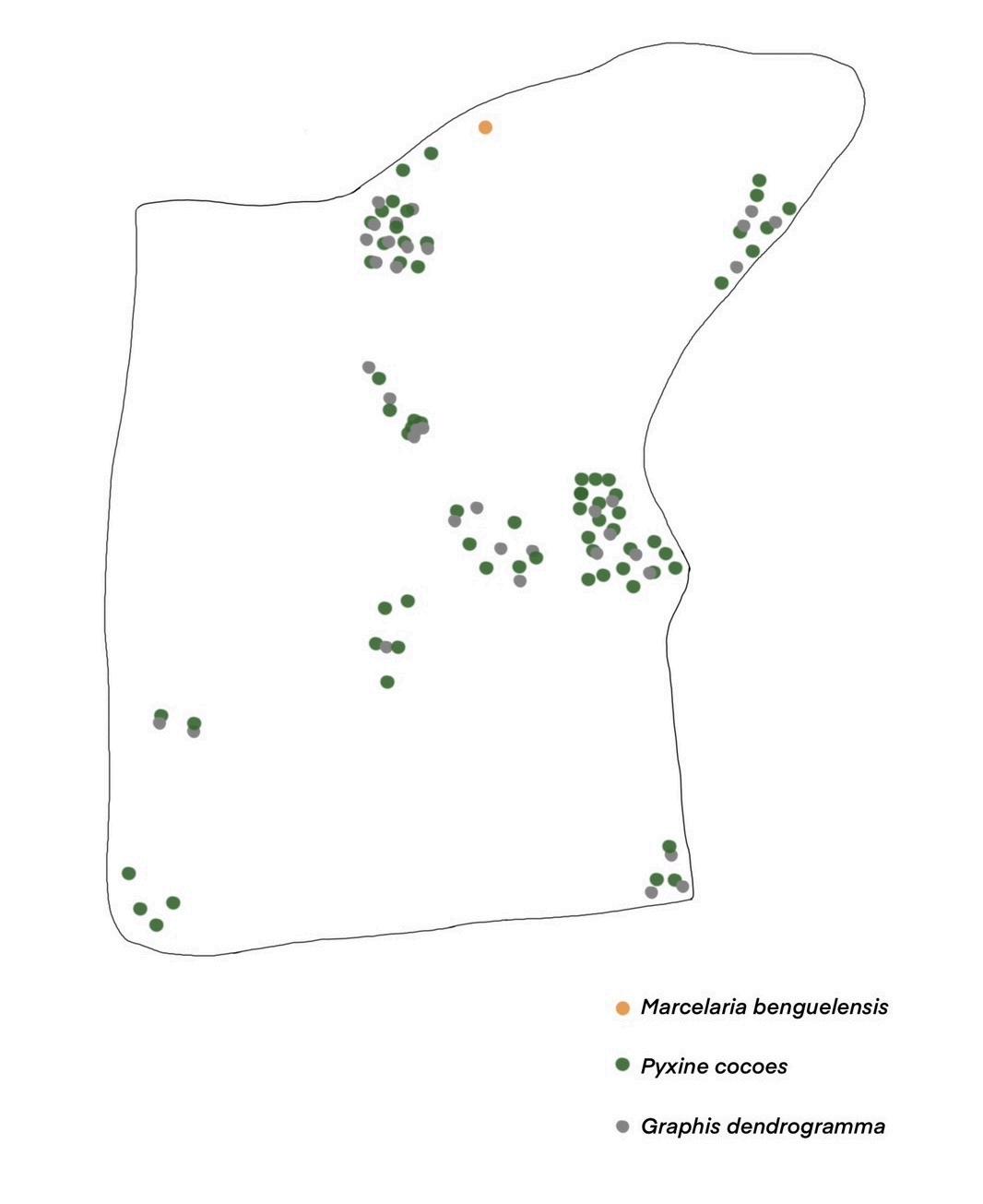



We examined 75 trees at Satree Phuket School and found that most of the lichen species were Pyxine cocoes. We looked at each tree twice and Pyxine cocoes, 36 Graphis , and 1 Marcelaria . This shows that Pyxine is the most common lichen, usually found in places with both sunlight and shade. The least common Marcelaria benguelensis , grows best in direct sunlight and has an orange-yellow color. In the future, we will study their metabolites to better understand why they prefer

▪ Analysis of Metabolites in Corticolous Lichens at Satree Phuket School



▪ Study of Metal Accumulation in Corticolous Lichens at Satree Phuket School

▪ Evaluation of Cation Exchange Capacity in Saxicolous Lichens at Satree Phuket School





The oriental garden lizard (Calotes versicolor) thrives in Thailand and represents natural freedom. These reptiles live in gardens, forests, and cities, including places like Satree Phuket School campus, where they help control pests and indicate how healthy the environment is. They can live in many different places, which shows how strong and free they are. They are active during the day and do interesting things like changing their color to hide and making displays to show where their home is. They really show what it means to live without limits. Right now, they are not in danger of disappearing, but it's really important to protect their homes to keep them safe. The oriental garden lizard reminds us that all living things should be free, and it's wonderful to live with nature and take care of where they live for the future.





Chaeyun Hong
ABSTRACT
“Two possibilities exist; either we are alone in the Universe or we are not, Both are equally terrifying.”Arthur C. Clarke
For countless millennia, the question “Are we alone in the Universe?” has been asked endlessly as we averted our gaze onto the night sky that shone upon us with its beauty and mystery. If these extraterrestrial life forms do exist, how come there has been not a single interaction between us and other intelligent life forms? Do they find us inferior or is it perhaps us that is making the mistake of actively searching for other life forms? However, if there is one thing that can be deemed as humanity's greatest strength and weakness; It is our ability to hope. Although our hope may drive us into a wall we can never penetrate, it may also guide us into the discovery of new life forms.





Ancient beliefs in extraterrestrial life were rare, with mythologies and religions dominating the explanations of the universe. The Greeks, for instance, attributed the movements of the night sky to mythological deities. Despite this, some philosophers, like Anaximander, challenged these orthodoxies, laying the groundwork for the concept of a plurality of worlds. Atomism, introduced by Leucippus and Democritus, furthered this idea, suggesting that all material things were composed of indivisible atoms. Epicurus later expanded on atomism to propose the existence of limitless worlds. Despite opposition from influential philosophers like Plato and Aristotle, and the decline of Epicureanism with the rise of Christianity, the Renaissance revived interest in these ideas. The Copernican principle, proposed by Nicolaus Copernicus, challenged the Earth-centric model of the universe, suggesting instead a heliocentric system. This principle, alongside the works of Giordano Bruno and Galileo Galilei, reignited the belief in cosmic pluralism.
Today, advanced technology enables more effective research into extraterrestrial life, focusing on our Solar System and beyond. Jupiter’s moon Europa, with its speculated salty ocean beneath an icy crust, presents a promising site for life. The discovery of numerous exoplanets by the Kepler Space Telescope, such as Kepler-22b in the habitable zone of its star, heightens the possibility of life beyond Earth. Studies on extremophiles—organisms thriving in extreme conditions—offer insights into potential life forms on exoplanets, suggesting that life might not require Earth-like conditions. Research continues to explore these possibilities, driven by humanity’s enduring hope and curiosity.



The Kepler Space Telescope, launched in 2009, revolutionized the search for exoplanets. Using the transit method, it identified many planets within habitable zones, such as Kepler-22b. This method also allows scientists to study exoplanet atmospheres, detecting elements like helium and water vapor, crucial for sustaining life.
Efforts to communicate with extraterrestrial life include the Arecibo Message and the Golden Record, sent aboard Voyagers 1 and 2. These records, containing images, sounds, and greetings from Earth, symbolize humanity’s hope to be found by other civilizations. The Zoo hypothesis offers an intriguing explanation for the lack of response, suggesting that advanced extraterrestrial beings might be intentionally avoiding contact until humanity evolves further.
The quest to find extraterrestrial life is deeply ingrained in human nature. From ancient philosophers to modern scientists, the idea of not being alone in the universe persists, fueled by hope and curiosity. Despite the challenges, this hope may one day lead us to discover that we are not alone in the cosmos.


In Silico investigation of anticancer drugs as potential inhibitors for Interleukin 1 which could be used to treat lung cancer caused by PM2.5 inflammation
Andrea Warnnissorn
Key Terms: Interleukin-1, Lung Adenocarcinoma, Particulate matter 2.5, Molecular docking, Pathogenesis, in silico study
Abstract
Many past scientific studies have shown a strong correlation that air pollution can lead to various types of diseases affecting the respiratory system. One of the components in air pollution is fine particulate matter 2.5 (PM2.5), which are particles that are less than 2.5 um in aerodynamic diameter. Due to its minute size, PM2.5 can easily evade the nasal mucosa and permeate into the lungs. When in the lungs, PM2.5 causes inflammation of the epithelial cells lining the lungs, the combination of cancer-causing mutations and inflammation from PM2.5 causes the cells to over-express their genes and replicate uncontrollably, forming tumors. When irritants like PM2.5 enter the lungs, macrophages within the lungs release interleukin-1ß (IL-1ß), a pro-inflammatory cytokine that promotes the inflammatory response. Cells damaged or killed by the irritants release another inflammatory cytokine, Interleukin-1a (IL-1a), which further promotes the secretion of IL-1ß by macrophages, worsening the inflammation and increasing the chances of cancerous cells forming. In this experiment, we will use sets of anticancer drugs from the National Cancer Institute and molecular docking to find any drugs that could bind to the active sites of IL-1ß and IL-1a and act as potential inhibitors of the inflammatory cytokines, which could ease the inflammatory response within the respiratory system.


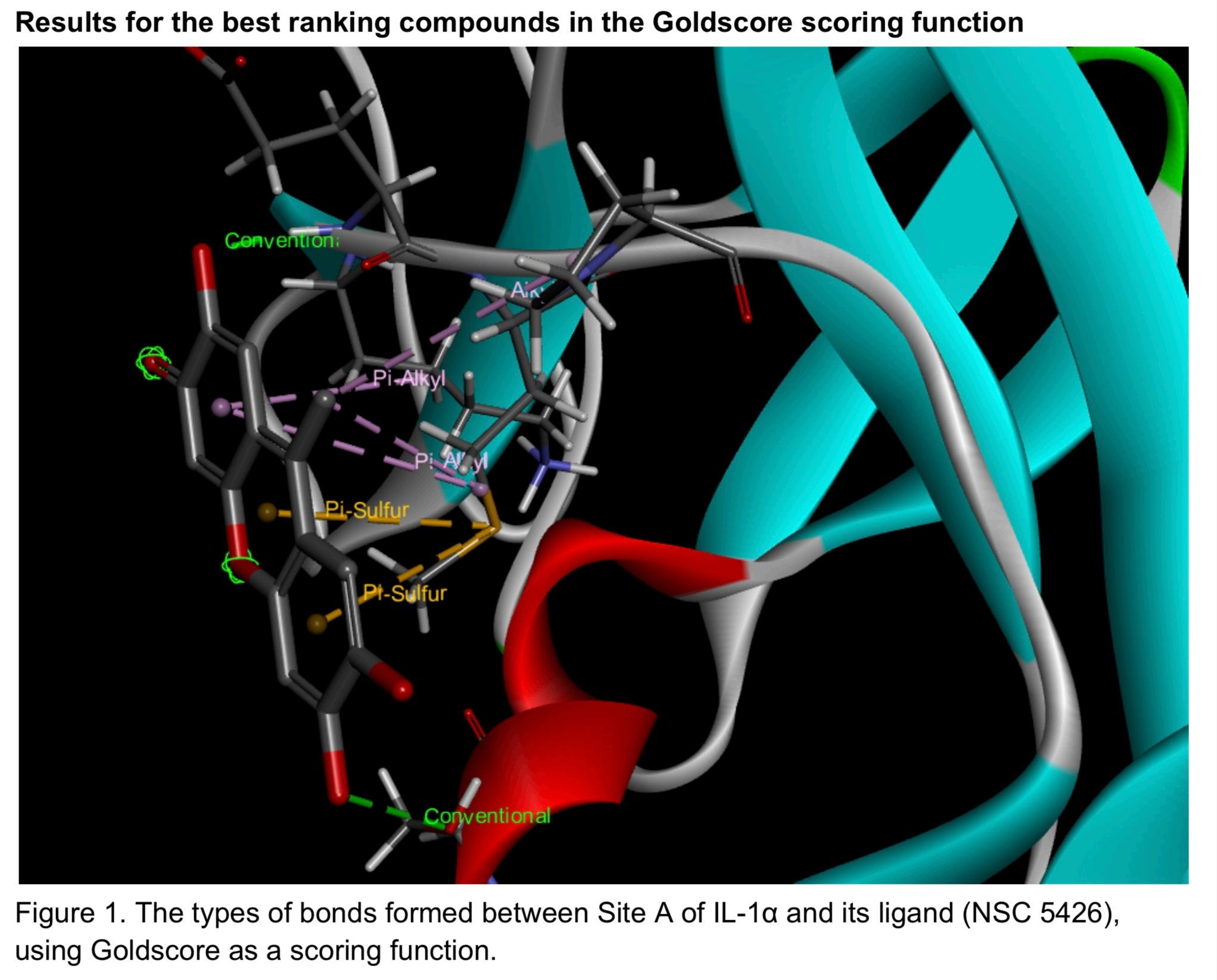





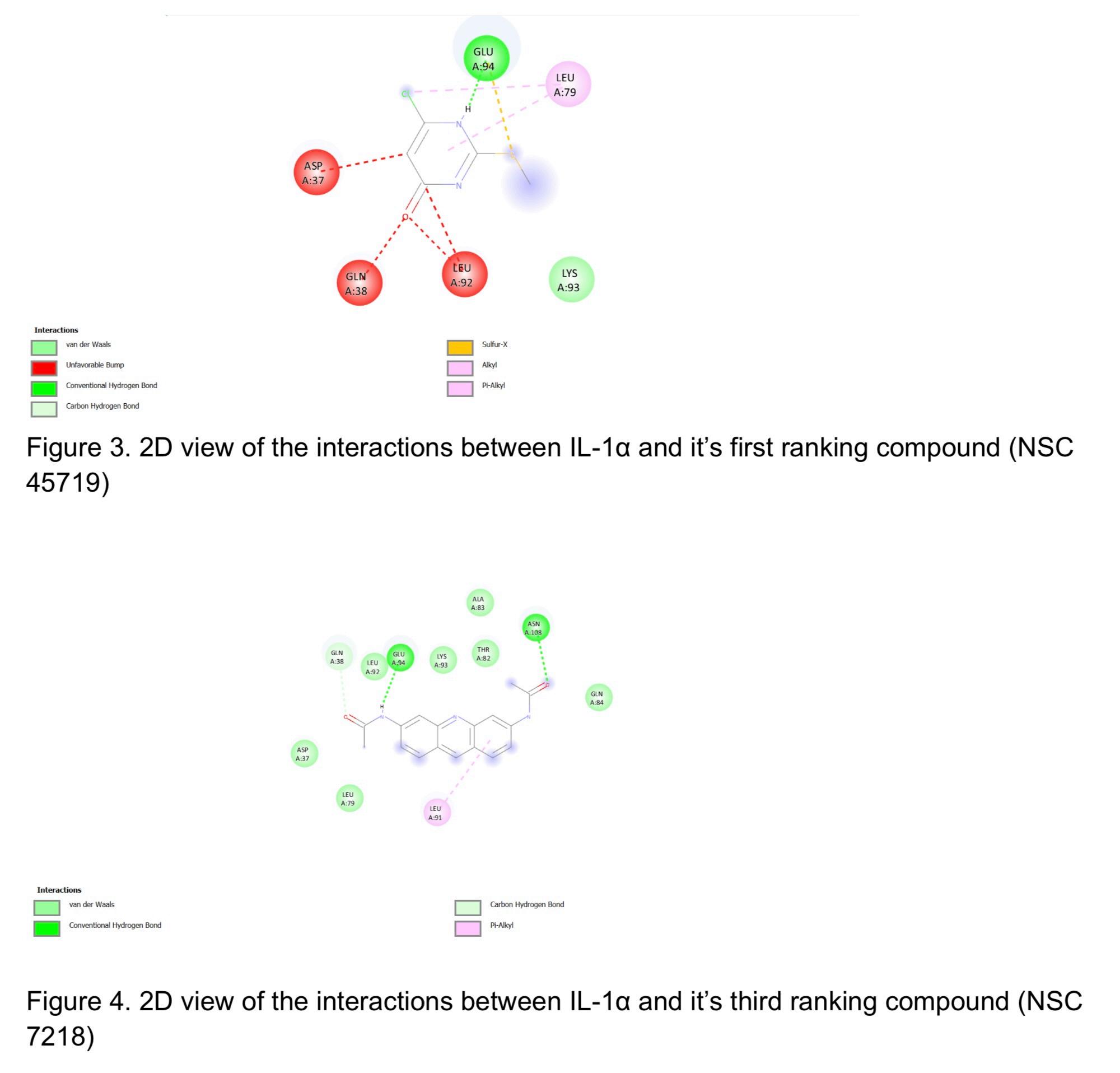


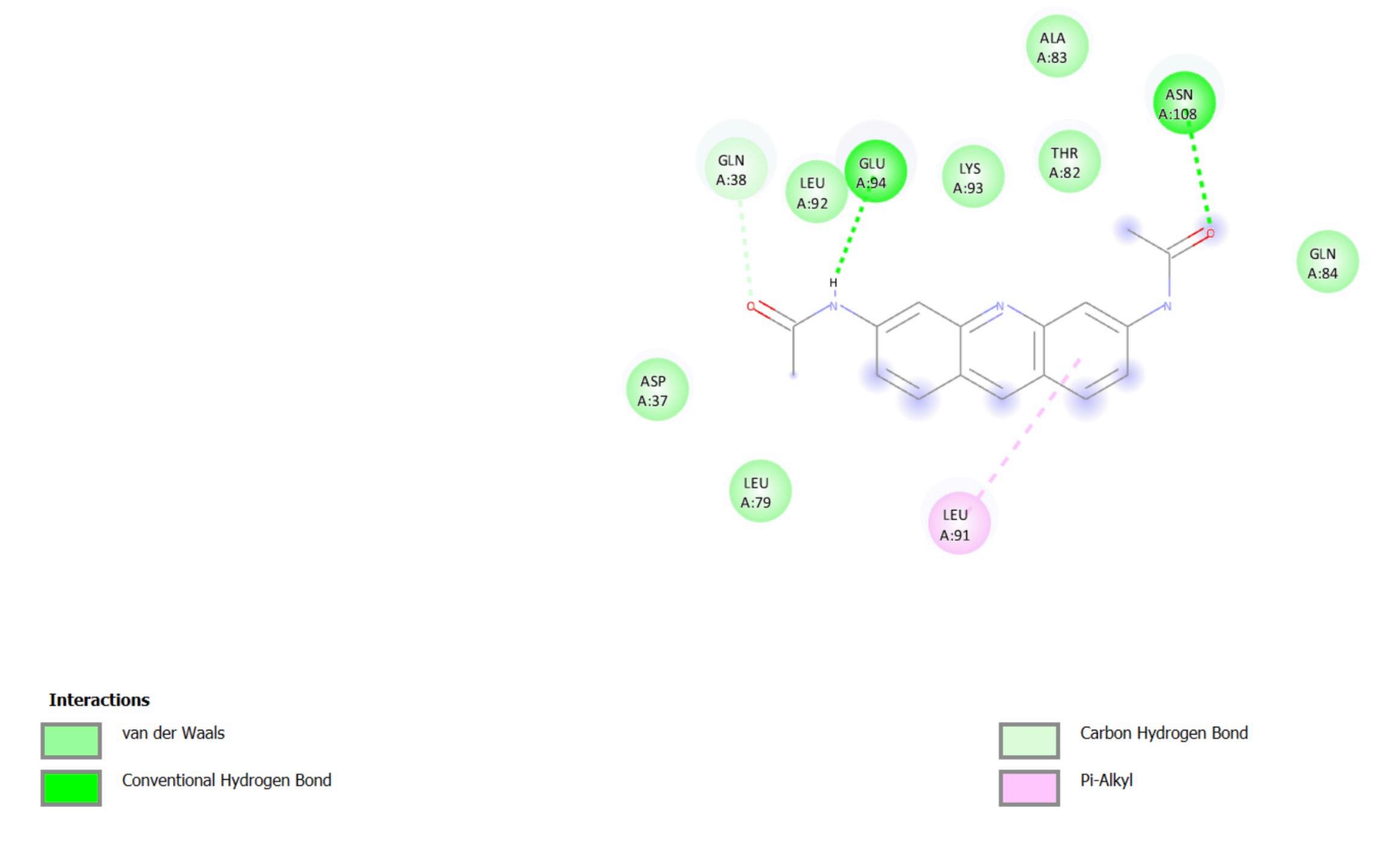
4. 2D view of the interactions between IL-1α and it’s third ranking compound (NSC 7218)



5. 2D view of the interactions between IL-1β and it’s first ranking compound (NSC 116397)


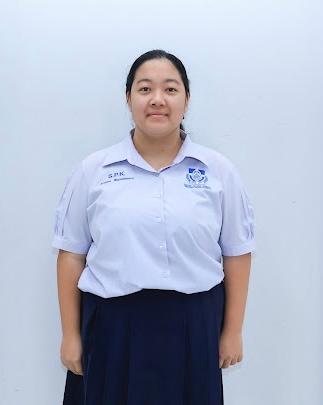
Congratulations ANDREA WARNNISSORN on winning a gold medal at the Thailand Science Ideation Contest 2024 held in Bangkok, Thailand, for her outstanding research titled "In Silico investigation of anticancer drugs as potential inhibitors for Interleukin 1 which could be used to treat lung cancer caused by PM2.5 inflammation."


This is a proud moment for The Outdoor Science Club and our entire school community. Well done, Andrea!


Y13 - Andrea Warnnissorn
Y12 - Thitichaya Cheewawisit
Y12 - Naparpa Parpatson
Y12 - Chaeyun Hing
Adviser: Jeffrey Ephreim V. Villegas




